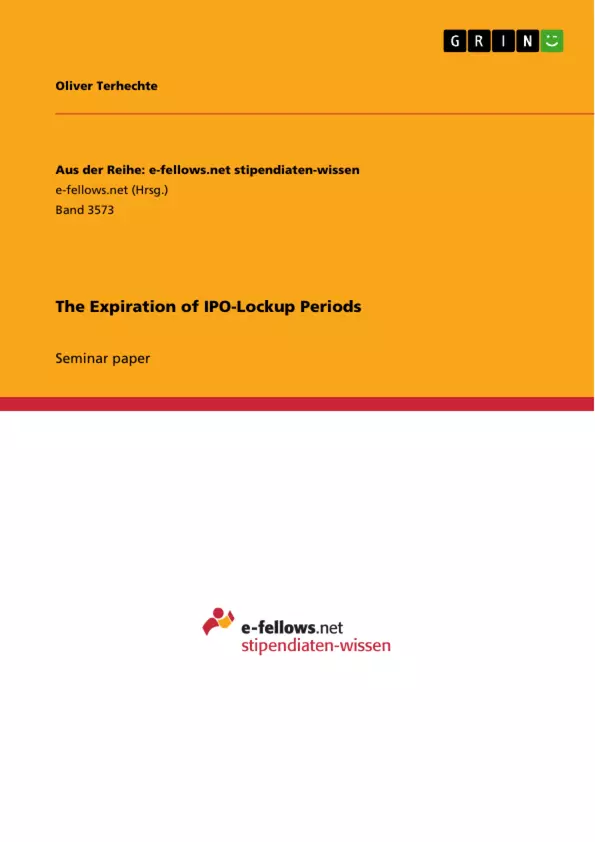This paper analyses the expiration of IPO-lockup periods and its affects on stock returns using event study methodology. The study focuses on 5,171 IPOs with lockup agreements in the U.S. market between 1988 and 2018. Significant differences in cumulative abnormal returns due to various firm characteristics are explored.
This thesis is largely based on the paper of Field and Hanka (2001) and assesses whether the expiration of lockup periods results in abnormal returns and daily trading volume. For this purpose, an event study for 3,306 lockup agreements of IPOs over a 31-year period from 1988 until 2018 is performed. The sample is limited to the United States as the newly listed firms' domicile nation. The changes in daily trading volume around the expiration date of the lockup are also analysed. Moreover, the paper examines the length of the agreed lockup periods and whether tech firms react differently to the expiration from firms in other industries.
Table of Contents
- 1. Introduction
- 2. Data and Methodology
- 2.1. The Sample
- 2.2. Event Study Methodology
- 3. Results
- 3.1. Length of the Lockup Period
- 3.2. Abnormal Returns Around the Unlock Date Across All Firms
- 3.3. Venture Capital Backing
- 3.4. Tech vs. Non-Tech Firms
- 3.5. Development of Cumulative Abnormal Returns Over Time
- 3.6. Development of Daily Volume During the Event Window
- 3.7. Development of Bid-Ask Spreads During the Event Window
- 3.8. Firms with Multiple Lockup Days
- 3.9. Robustness Check - 180-Days Effect
- 4. Conclusion
Objectives and Key Themes
This paper analyzes the effect of lockup period expirations on stock returns and trading volume for US IPOs between 1988 and 2018. The study aims to determine whether the expiration of lockup periods results in abnormal returns and daily trading volume changes. This research uses a large sample of 4,080 IPOs and applies event study methodology to assess the impact of lockup expirations.
- Abnormal returns around the unlock date
- Daily trading volume changes
- Impact of venture capital backing on returns
- Differences between tech and non-tech firms
- Length of the lockup period and its influence
Chapter Summaries
- Chapter 1: Introduction This chapter introduces lockup agreements, their objectives, and discusses relevant previous research on their impact on stock returns. The paper outlines its specific objectives, focusing on the relationship between lockup expirations, abnormal returns, and trading volume. The study's sample, methodology, and data sources are briefly presented.
- Chapter 2: Data and Methodology This chapter details the data sources used for the study, which include the Securities Data Corporation (SDC) database for IPO information and the Center for Research on Securities Prices (CRSP) for stock return data. The chapter explains the sample selection process, including the exclusion of closed-end funds, spinoffs, and companies with unavailable lockup information. The methodology of the event study is described, focusing on the analysis of abnormal returns and trading volume changes around the lockup expiration date.
Keywords
This paper examines the impact of lockup expiration on stock returns and trading volume for US IPOs. The study focuses on key concepts such as lockup agreements, abnormal returns, daily trading volume, venture capital backing, tech and non-tech firms, and event study methodology. The research leverages data from the Securities Data Corporation (SDC) and the Center for Research on Securities Prices (CRSP) to analyze a large sample of IPOs between 1988 and 2018.
- Quote paper
- Oliver Terhechte (Author), 2020, The Expiration of IPO-Lockup Periods, Munich, GRIN Verlag, https://www.grin.com/document/906704



